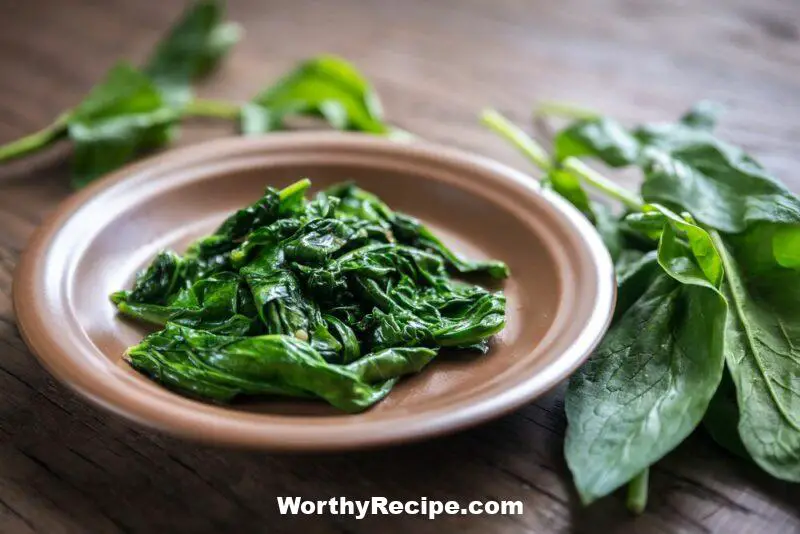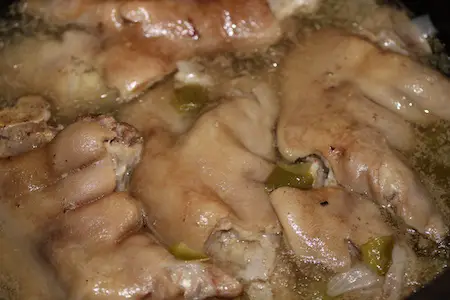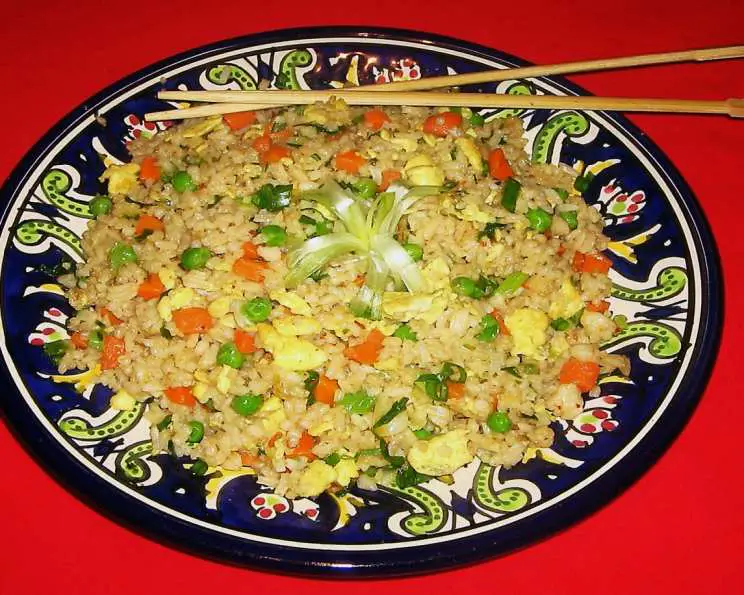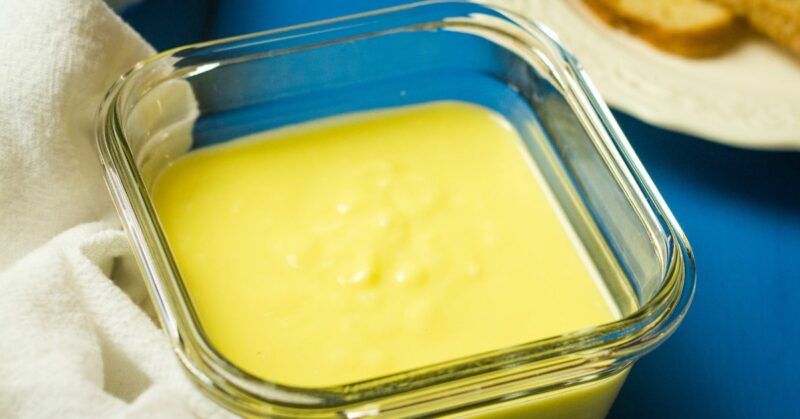Can Cooked Spinach Cause Food Poisoning?
The safety of spinach has been a topic of discussion for years due to numerous reported outbreaks in the past. There have been cases where spinach was linked to E. Coli, Salmonella, and Listeria contamination, with raw spinach being one of the major culprits. However, the safety of cooked spinach remains a debatable issue.
In this article, we will delve into the topic of cooked spinach and food poisoning. We seek to explore the relationship between cooked spinach consumption and food poisoning as well as other pertinent information regarding nutritional content and safe cooking methods that will minimize the risk of food poisoning.
What is Food Poisoning?
Food poisoning refers to illness that results from consuming contaminated or spoiled food. The most common bacteria responsible for food poisoning include E. Coli, Salmonella, and Listeria.
Symptoms of food poisoning may vary based on the type of contaminant present in the contaminated food. Common symptoms include nausea, vomiting, diarrhea, fever, stomach cramps and dehydration among others. These symptoms could be mild or severe depending on individual immunity status.
Spinach and Food Poisoning History
A historical view shows that there have been several reported cases linking salmonella and E.coli contamination with spinach in previous years. In 2006 for instance, an outbreak was reported where more than 200 people were infected by E.coli due to contaminated spinach in California.
The following year, an outbreak linked to pre-packaged baby spinach resulted in over 205 individuals becoming sick with E.coli in 26 states within America. Another incident occurred in New Zealand in 2018 where frozen spinach linked to Listeria led to nine deaths.
E. Coli
E.coli is usually found in human and animal feces. The presence of E.coli in spinach and other leafy greens could occur during fertilization and irrigation processes.
Cooking spinach to the right temperature could help to reduce the risk of E.coli contamination because heat kills bacteria. But it does not fully eliminate the possibility of consuming contaminated food because some strains are heat-resistant, meaning that they survive with low levels of oxygen while others do not generate symptoms after being cooked.
Salmonella
Salmonella is associated with undercooked food, unpasteurized dairy products, and handling reptiles or birds. Kale, spinach, and lettuce have had many reported salmonella contaminations due to exposure to contaminated water. Increasing agricultural standards regarding safe water usage will further decrease the number of salmonella contaminations in produce.
Listeria
Listeria is commonly found in soft cheese, deli meat, and vegetables like sprouts or frozen produce. Listeria can survive even at cold temperatures (less 40F/ 4C), making it an ideal pathogen to be found in frozen food storage facilities including frozen spinach products.
Risks Associated with Cooked Spinach Consumption
Cooking has various risks when it comes to food poisoning. However, the chances of getting sick are unlikely as long as we follow proper cooking techniques.
Deadliness/Bacterial Growth
One of the most significant risks associated with cooked spinach consumption is bacterial growth. As previously stated, some strains of bacteria aren’t affected by heat which means that they could still exist in foods after cooking.
Bacteria can also be spread through cross-contamination when utensils come into contact with contaminated spinach and the bacteria are carried over to other foods. Proper cleaning of cooking utensils after use will prevent cross-contamination and the spread of bacteria
Nutritional Content Change from Fresh/Raw to Cooked
The consumption of cooked vegetables could lead to significant nutrient loss due to the heat-intensity during cooking. For instance, Vitamin C, Vitamin A and folate content in spinach all reduce after the plant has undergone a cooking process.
Nevertheless, cooking can help to enhance the bioavailability of certain nutrients like carotenoids present in spinach. Heat treatment could break down the cell walls, making it easier for nutrients to be absorbed by human intestines.
Type(s) of toxins produced by cooking methods
Studies on the effects of cooking on spinach indicate that there is no specific toxin generated through cooking that causes food poisoning. However, some forms of preparation might produce harmful products such as nitrates that turn into nitrosamines in our digestive tract that can lead to cancer.
Avoiding heating spinach multiple times could help prevent these types of negative effects. Proper handling procedures while cooking include washing your hands before preparation and using clean utensils to avoid contamination.
Prevention Measures
To avoid incidences of food poisoning associated with cooked spinach, we have outlined some best practices when it comes to handling and preparing cooked spinach.
Proper Handling Procedures
- Wash your hands with soap and water at least 20 seconds before making any preparations
- Clean all kitchen surfaces including utensils which come in contact with raw food items.
- Avoid cross contamination by storing raw meat, poultry and vegetables separately either in their storage facilities or their own sealed containers.
Cooking Temperature/Time Considerations
Cooking temperature and time could affect the amount of nutrients preserved when cooked spinach is consumed. Below is a list of safer cooking methods:
Boiling
- Cook fresh spinach in boiling water for about 3 minutes and one minute after wilted, set aside to cool
- Do not soak the spinach before boiling to avoid nutrient loss.
Microwaving
- Microwave spinach in a covered container with a small amount of water until wilted and tender, then let it stand for at least 1 minute to complete cooking.
Sauteing
Sautéing requires ingredients to be stirred continuously until they lightly cook in oil. When sautéing spinach it’s important not to overheat the oil or mix too many vegetables with the spinach as this stifles the ability for even cooking. The spinach can then be seasoned to taste.
Stir-frying
In stir-frying, small sized items like vegetables are chopped up into similar sized pieces and cooked together in high heat. Again, stirring continuously is key as well as ensuring that all elements are similar in dimension for even cooking.
Steaming
Steaming helps to retain moisture and nutrients that boiling risk losing. Follow these steps:
- Add water and steam the fresh vegetable above it using a steamer basket or strainer until wilted.
- In case you don’t have either, put the spinach inside a heat-proof dish and place them in a preheated oven until wilted.
- Allow to cool after steaming and serve it alone or mix it with other foods.
Best Cooking Methods for Spinach
Steamed spinach happens to be the safest method of cooking spinach.
- Steaming helps to avoid any seeping of harmful toxins from the vegetable.
- It preserves key nutrients like chlorophyll, iron, fiber, and calcium which boiled spinach leeches away.
- Additionally, steaming ensures even cooking of the leafy green.
Benefits of Consuming Cooked Spinach
Cooking spinach enhances its bioavailability of certain nutrients due to its effects on plant components like cell membranes. Nutrients such as vitamin A and potassium become more available to be absorbed by our digestive system when cooked than those present in raw spinach.
When to Avoid Cooked Spinach
Cooked spinach is not suitable for everyone especially if they are experiencing pre-existing health conditions that could affect their immune systems or women who are pregnant. Individuals with weakened immune systems should abstain from eating raw or cooked vegetables that pose contamination risks like spinach to avoid any potential illnesses.
Alternative Spinach Options
If you are looking for alternative spinach options with minimal risk then you should consider Perpetual Spinach or New Zealand Spinach, both of which have been touted as alternatives because these types are highly resistant to frost and can grow up in your garden year-round. Be sure to follow proper farming practices and don’t forget about the washing process!
Conclusion
In conclusion, cooked spinach may not be a greater risk for food poisoning than eating fresh spinach. However, the risks associated with cross-contamination or the consumption of contaminated spinach still exist. We recommend that you practice proper sanitization and food handling procedures when preparing and cooking spinach to avoid instances of food poisoning.
References
- Gomez-Lopez VM, Ragaert P, Debevere J. Role of chemicals in cleaning and sanitizing food-contact surfaces for microorganism control. Comprehensive Reviews in Food Science and Food Safety. 2007;6(5):16-29. doi:10.1111/j.1541-4337.2007.tb00071.x
- Mujica V, Luna G, Guerrero-Mandujano A, Calderón-Romero L, García-Cruz L, Barrón-Zambrano JA. Risk communication strategy during an outbreak of Escherichia coli in spinach in Mexico City. Gaceta sanitaria. 2014;28(1):27-30.
- Nanduri S, Hedberg CW, Scheftel J, et al. Outbreak of Salmonella enterica serotype Saintpaul infections associated with eating alfalfa sprouts–United States, 2009. MMWR Morb Mortal Wkly Rep. 2009;58(19):500-3.
- Safari H, Mozafari R, Nowrouzi A. Potential sources of microbial contamination in cucumber greenhouses. J Plant Prot Res. 2012;52(4):466-470.doi:10.2478/v10045-012-0075-y
- Standaert SM, Gurian-Sherman D (2015) Agricultural Antibiotics and Human Health Urgent Priorities for Stewardship. Environmental Health Perspectives 123(1): A6–A11
Can Cooked Spinach Cause Food Poisoning?
Is it safe to eat cooked spinach?
Yes, it is generally safe to eat cooked spinach. However, like any food, it can become contaminated during preparation or storage, which may lead to food poisoning.
What are the symptoms of food poisoning from spinach?
Symptoms of food poisoning from spinach may include nausea, vomiting, stomach cramps, and diarrhea. In severe cases, it can lead to dehydration and hospitalization.
How can I prevent getting food poisoning from cooked spinach?
To prevent food poisoning from spinach, make sure to wash it thoroughly before cooking and store it in the refrigerator at 40°F or below. Avoid consuming spinach that has a slimy texture, off odor, or has been left out at room temperature for more than two hours.
What should I do if I think I have food poisoning from spinach?
If you suspect you have food poisoning from spinach, seek medical attention immediately. Stay hydrated by drinking plenty of fluids and rest until your symptoms subside. Contact the restaurant or grocery store where you purchased the spinach to report the incident.






